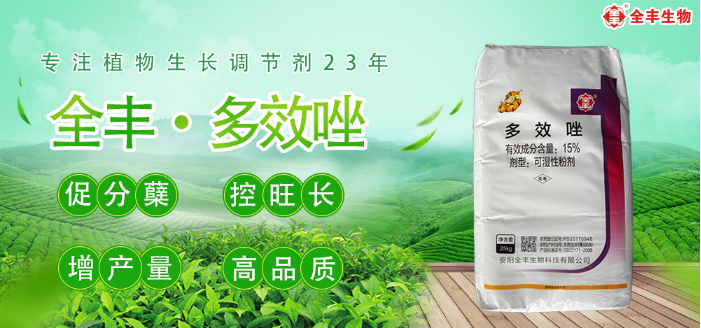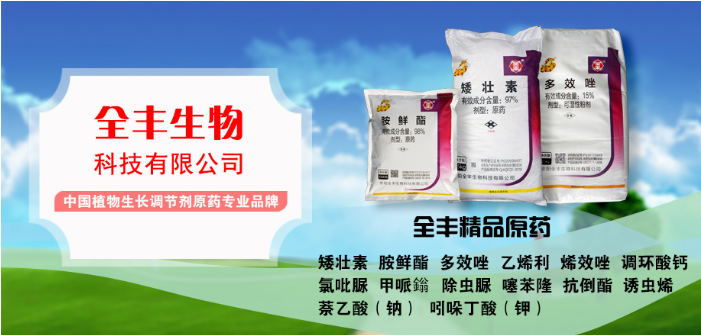Rice planting technology (II)
Time:2023-01-31 Follow:939
4. Field management, disease, pest and weed control
After transplanting, there will usually be empty planting. Therefore, we should do a good job of seedling inspection after transplanting. If there are holes, we should fill in high-quality rice seedlings in time to ensure the planting density and basic number of rice seedlings. In addition, the field sealing agent can be sprayed properly before and after transplanting to inhibit the germination of weed seeds in the paddy field. Weeding should also be done well after transplanting to prevent weeds from seizing the growth nutrition of rice seedlings. At the same time of weeding, we should also do a good job in insect control. The insect pest of rice is relatively serious. The common one is leafminer, which can be properly sprayed with insecticide for control. Pay attention to the dosage to prevent harm to rice.
1. Two to three days before sowing or at the seedling needle setting stage, use 75 to 100 ml of 50% butachlor emulsifiable concentrate per mu to spray 30 kg of water on the bed surface, or after sowing rice, when the seeds are exposed or at the needle setting stage, use 100 ml of 30% suffert emulsifiable concentrate per mu plus water spray to seal the weeds on the bed surface, and the safety of the former is not as good as that of the latter.
2. For emergent barnyard grass, 50% quinclorac wettable powder can be sprayed spray per mu according to the product instructions.
3. When seedlings have two leaves and one heart, use 20% methyl pyrifos 500 times solution or Kangli 1500 times solution for spray.
4. In order to prevent and cure the disease, we should take the initiative to prevent and cure the disease when it is found. If there are dead seedlings in a large area, it will be out of time. The way to check the disease is to see if the leaf tip spits water. If the leaf tip does not spit water, it is a sign of the occurrence of the disease.
5. Each mu of chilo suppressalis, rice thrips, and gray planthoppers is treated with 200ml of insecticidal double and 200ml of BT insecticide by spray, so as to achieve the simultaneous treatment of insects and eggs.
6. To prevent and control mole crickets in the seedbed, 1500 times spray can be used to attack people, as well as control chilo suppressalis, thrips, rice weevil, etc.
7. Before transplanting rice seedlings, it is necessary to use 500 times liquid of disease enemy or 500 times liquid of Far East Junxing or 500 times liquid of Bem to spray according to local conditions to prevent rice blast, flax leaf spot and bacterial blight, and prevent seedlings from entering the field with diseases.
8. Control of stripe leaf blight
The stripe leaf blight is transmitted by the grey planthopper, so the rice planthopper should be controlled:
① Combined control of wheat aphid and rice planthopper.
② In the mature stage of wheat, the planthopper in the wheat field moved into the seedbed due to the deterioration of the living conditions. Before the wheat ripens to the transplanting stage, the rice seedling field should be controlled with 10% aphid clear or 20 grams of dipyridamide to 30 kg of water for 2-3 times. Control the vector of the virus to control pests and prevent diseases. Morpholine guanidine copper spray can also be used for control, or 30-50g of dry streaked leaves can be evenly sprayed with 30kg of water to inhibit the development of rice streaked leaf blight
5. Application of plant growth regulators in rice

The rice cultivated by soaking seeds with uniconazole has many tillers and short stature. After transplanting into the field, it will turn green quickly, lose seedlings slightly, grow early and grow quickly, and the effective tillers and effective panicles will increase, achieving the effect of increasing panicles and yield. The sensitivity of different rice varieties to uniconazole is significantly different, and the use concentration should be different.
Spraying 100mg/L uniconazole at the stage of one leaf and one heart for wet seedling raising, spraying 100mg/L uniconazole at the stage of one leaf and one heart for two stage seedling raising and greenhouse seedling raising, and spraying 100mg/L uniconazole at the stage of one leaf and one heart for 15 days after transplanting, are effective measures to cultivate strong seedlings and improve yield. Uniconazole should not be used in dry seedling stage.
At the stage of two leaves and one heart of rice, water spray with 40 grams of 15% paclobutrazol per mu. The spraying shall be uniform, and the missed spraying and re-spraying shall not be allowed to make the seedlings grow uniformly. One week before transplanting rice seedlings, 5g rooting agent can be used per mu, and 15kg water can be added to the leaf spray to promote the seedlings to grow out of the root primordium. After transplanting, the seedlings will grow and elongate rapidly.





